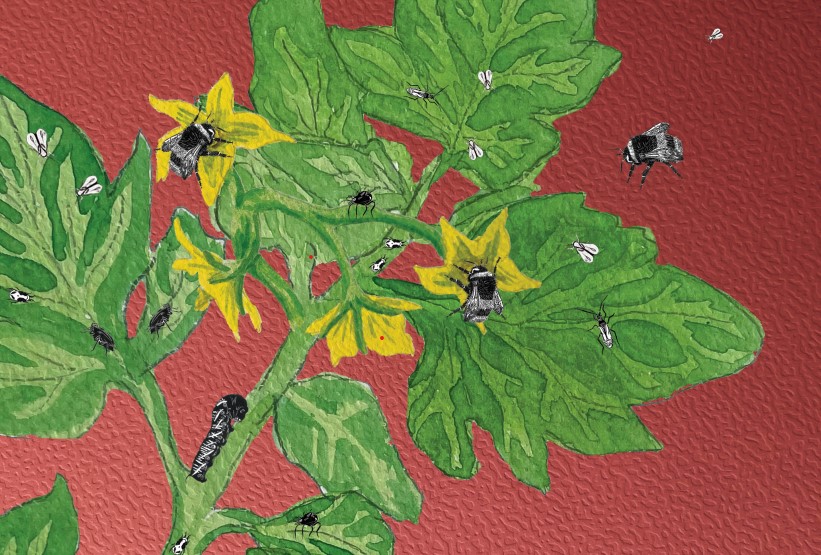Adding extra far-red to light improves plant growth. This additional growth essentially comes at the expense of energy available to defend against insect pests. Is that a problem? Not when you combine it with organic pest control, according to research by PhD candidate Davy Meijer on tomato plants. And there’s no negative impact on pollination by bumblebees either.
Plants respond to shade from neighbouring plants by growing faster and producing more flowers. That adaptation gives the plant an advantage in the battle for available sunlight. Plants ‘sense’ shade with a special photoreceptor that measures the ratio of red to far-red light. Neighbouring plants reflect far-red, thereby triggering the shade avoidance response.
Invisible
An increasing number of growers are taking advantage of this by using LED lamps in greenhouses to provide plants with extra far-red light. This isn’t visible to the naked eye. Far-red light (730-800 nanometres) falls outside the spectrum of the human eye, as PhD candidate Meijer explains. He investigated what that extra light means for the way insects interact with tomatoes.
Pest insects like the spider mite, greenhouse whitefly and green peach aphid do in fact benefit from the use of far-red light. ‘The decline in the plant’s defences leads to an increase in the number of pest insects’, says Meijer. ‘But as this increases the food supply for predaceous insects, their population grows too. Their numbers grow to such an extent that they can efficiently suppress the pests. Organic pest control can therefore work effectively with far-red light.’
Neon advertisement
The use of far-red light also has no negative impact on pollination by bumblebees. In fact, Meijer’s trials have shown the opposite to be true. Given the option, bumblebees prefer to visit tomatoes that are being grown with extra far-red light. He also discovered why bumblebees behave in that way. The flowers of tomato plants under far-red light emit a much stronger chemical signal to attract bumblebees.
‘The composition of that mixture of volatile organic compounds doesn’t change, but the total amount of it produced does’, says Meijer. ‘The stronger signal acts as a kind of neon advertisement, telling bumblebees that this is where they need to be.’ It’s not false advertising either. ‘The plant isn’t tricking them. Under far-red light, there are more flowers and so it’s easier to find food.’
Win-win
The use of far-red light thus seems to be a win-win situation for everyone involved. The plant grows faster and produces more tomatoes. And these effects do not come at the expense of organic pest control and/or the quality of pollination. ‘Based on my results, my advice would be to use far-red light. But as a scientist, I have to be careful’, says Meijer.
‘Why? Because these are greenhouse trials, where the bumblebees had a choice. In a commercial setting, that wouldn’t be the case. If you wanted to show the overall effect on yield, you would need to design the trial a little differently. You’d need one greenhouse with far-red light, and one without, and then you would look at the yield. But a PhD is only four years.’

 Illustration Roos van Dooremalen
Illustration Roos van Dooremalen